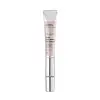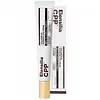What's inside
What's inside
 Key Ingredients
Key Ingredients

 Benefits
Benefits

 Concerns
Concerns

 Ingredients Side-by-side
Ingredients Side-by-side

Water
Skin ConditioningPropanediol
SolventHydrolyzed Collagen
EmollientGlycerin
HumectantNiacinamide
SmoothingHydrogenated Vegetable Oil
EmollientCaprylic/Capric Triglyceride
MaskingCetearyl Alcohol
Emollient1,2-Hexanediol
Skin ConditioningHydrogenated Polydecene
EmollientCetearyl Olivate
Polyacrylate-13
Sorbitan Olivate
EmulsifyingCarbomer
Emulsion StabilisingDimethicone
EmollientOlea Europaea Fruit Oil
MaskingCaprylyl Methicone
Skin ConditioningHydrogenated Polyisobutene
EmollientCetyl Ethylhexanoate
EmollientTromethamine
BufferingHydroxyacetophenone
AntioxidantButylene Glycol
HumectantPolyglyceryl-10 Laurate
Skin ConditioningCyamopsis Tetragonoloba Gum
Emulsion StabilisingAgar
MaskingC30-45 Alkyl Cetearyl Dimethicone Crosspolymer
EmollientEthylhexylglycerin
Skin ConditioningPanthenol
Skin ConditioningEthylhexyl Palmitate
EmollientCaprylyl Glycol
EmollientAdenosine
Skin ConditioningXanthan Gum
EmulsifyingSorbitan Isostearate
EmulsifyingPolyglyceryl-10 Myristate
Skin ConditioningDisodium EDTA
Parfum
MaskingEclipta Prostrata Extract
Skin ConditioningMethylpropanediol
SolventSodium Hyaluronate
HumectantHydrogenated Lecithin
EmulsifyingMelia Azadirachta Leaf Extract
Skin ConditioningCeramide NP
Skin ConditioningGlycine Soja Phytoplacenta Extract
Skin ConditioningMoringa Oleifera Seed Oil
EmollientCentella Asiatica Extract
CleansingGlycosphingolipids
EmollientHydrolyzed Elastin
EmollientSodium Hyaluronate Crosspolymer
HumectantHydrolyzed Glycosaminoglycans
HumectantPolyglyceryl-10 Stearate
Skin ConditioningBenzyl Glycol
SolventSodium Ascorbyl Phosphate
AntioxidantHydrolyzed Hyaluronic Acid
HumectantPropolis Extract
Skin ConditioningCollagen Extract
Skin ConditioningAsiaticoside
AntioxidantAsiatic Acid
Skin ConditioningMadecassoside
AntioxidantMadecassic Acid
Skin ConditioningPyridoxine
Skin ConditioningThiamine Hcl
MaskingAzulene
Skin ConditioningBiotin
AntiseborrhoeicFolic Acid
Skin ConditioningHyaluronic Acid
HumectantRaspberry Ketone
MaskingCyanocobalamin
Skin ConditioningWater, Propanediol, Hydrolyzed Collagen, Glycerin, Niacinamide, Hydrogenated Vegetable Oil, Caprylic/Capric Triglyceride, Cetearyl Alcohol, 1,2-Hexanediol, Hydrogenated Polydecene, Cetearyl Olivate, Polyacrylate-13, Sorbitan Olivate, Carbomer, Dimethicone, Olea Europaea Fruit Oil, Caprylyl Methicone, Hydrogenated Polyisobutene, Cetyl Ethylhexanoate, Tromethamine, Hydroxyacetophenone, Butylene Glycol, Polyglyceryl-10 Laurate, Cyamopsis Tetragonoloba Gum, Agar, C30-45 Alkyl Cetearyl Dimethicone Crosspolymer, Ethylhexylglycerin, Panthenol, Ethylhexyl Palmitate, Caprylyl Glycol, Adenosine, Xanthan Gum, Sorbitan Isostearate, Polyglyceryl-10 Myristate, Disodium EDTA, Parfum, Eclipta Prostrata Extract, Methylpropanediol, Sodium Hyaluronate, Hydrogenated Lecithin, Melia Azadirachta Leaf Extract, Ceramide NP, Glycine Soja Phytoplacenta Extract, Moringa Oleifera Seed Oil, Centella Asiatica Extract, Glycosphingolipids, Hydrolyzed Elastin, Sodium Hyaluronate Crosspolymer, Hydrolyzed Glycosaminoglycans, Polyglyceryl-10 Stearate, Benzyl Glycol, Sodium Ascorbyl Phosphate, Hydrolyzed Hyaluronic Acid, Propolis Extract, Collagen Extract, Asiaticoside, Asiatic Acid, Madecassoside, Madecassic Acid, Pyridoxine, Thiamine Hcl, Azulene, Biotin, Folic Acid, Hyaluronic Acid, Raspberry Ketone, Cyanocobalamin
Collagen Extract
Skin ConditioningGlycerin
HumectantWater
Skin ConditioningNiacinamide
SmoothingDimethicone
EmollientHydrogenated Polydecene
EmollientButylene Glycol
HumectantTriethylhexanoin
MaskingCetearyl Alcohol
EmollientSodium Acrylate/Sodium Acryloyldimethyl Taurate Copolymer
Emulsion StabilisingPolyglyceryl-3 Methylglucose Distearate
EmulsifyingCyclopentasiloxane
EmollientButyrospermum Parkii Butter
Skin ConditioningDimethicone/Vinyl Dimethicone Crosspolymer
Skin ConditioningIsohexadecane
EmollientGlyceryl Caprylate
EmollientSodium Polyacrylate
AbsorbentAmmonium Acryloyldimethyltaurate/Vp Copolymer
Polysorbate 80
EmulsifyingChlorphenesin
AntimicrobialHydrogenated Lecithin
EmulsifyingGlycosaminoglycans
EmollientSteareth-20
CleansingAdenosine
Skin ConditioningSorbitan Oleate
EmulsifyingAllantoin
Skin ConditioningHippophae Rhamnoides Oil
EmollientDisodium EDTA
Theobroma Cacao Extract
Skin ConditioningDextrin
AbsorbentT-Butyl Alcohol
PerfumingN-Hydroxysuccinimide
Skin ConditioningPalmitoyl Tripeptide-5
Skin ConditioningGold
Cosmetic Colorant1,2-Hexanediol
Skin ConditioningGlycine
BufferingChrysin
Skin ConditioningPalmitoyl Tripeptide-1
Skin ConditioningSerine
MaskingGlutamic Acid
HumectantPalmitoyl Tetrapeptide-7
Skin ConditioningBeta-Glucan
Skin ConditioningAspartic Acid
MaskingLeucine
Skin ConditioningAlanine
MaskingLysine
Skin ConditioningArginine
MaskingTyrosine
MaskingPhenylalanine
MaskingThreonine
Proline
Skin ConditioningValine
MaskingIsoleucine
Skin ConditioningHistidine
HumectantMethionine
Skin ConditioningCysteine
AntioxidantCollagen Extract, Glycerin, Water, Niacinamide, Dimethicone, Hydrogenated Polydecene, Butylene Glycol, Triethylhexanoin, Cetearyl Alcohol, Sodium Acrylate/Sodium Acryloyldimethyl Taurate Copolymer, Polyglyceryl-3 Methylglucose Distearate, Cyclopentasiloxane, Butyrospermum Parkii Butter, Dimethicone/Vinyl Dimethicone Crosspolymer, Isohexadecane, Glyceryl Caprylate, Sodium Polyacrylate, Ammonium Acryloyldimethyltaurate/Vp Copolymer, Polysorbate 80, Chlorphenesin, Hydrogenated Lecithin, Glycosaminoglycans, Steareth-20, Adenosine, Sorbitan Oleate, Allantoin, Hippophae Rhamnoides Oil, Disodium EDTA, Theobroma Cacao Extract, Dextrin, T-Butyl Alcohol, N-Hydroxysuccinimide, Palmitoyl Tripeptide-5, Gold, 1,2-Hexanediol, Glycine, Chrysin, Palmitoyl Tripeptide-1, Serine, Glutamic Acid, Palmitoyl Tetrapeptide-7, Beta-Glucan, Aspartic Acid, Leucine, Alanine, Lysine, Arginine, Tyrosine, Phenylalanine, Threonine, Proline, Valine, Isoleucine, Histidine, Methionine, Cysteine
Ingredients Explained
These ingredients are found in both products.
Ingredients higher up in an ingredient list are typically present in a larger amount.
1,2-Hexanediol is a synthetic liquid and another multi-functional powerhouse.
It is a:
- Humectant, drawing moisture into the skin
- Emollient, helping to soften skin
- Solvent, dispersing and stabilizing formulas
- Preservative booster, enhancing the antimicrobial activity of other preservatives
Adenosine is in every living organism. It is one of four components in nucleic acids that helps store our DNA.
Adenosine has many benefits when used. These benefits include hydrating the skin, smoothing skin, and reducing wrinkles. Once applied, adenosine increases collagen production. It also helps with improving firmness and tissue repair.
Studies have found adenosine may also help with wound healing.
In skincare products, Adenosine is usually derived from yeast.
Learn more about AdenosineButylene Glycol (or BG) is used within cosmetic products for a few different reasons:
Overall, Butylene Glycol is a safe and well-rounded ingredient that works well with other ingredients.
Though this ingredient works well with most skin types, some people with sensitive skin may experience a reaction such as allergic rashes, closed comedones, or itchiness.
Learn more about Butylene GlycolCetearyl alcohol is a mixture of two fatty alcohols: cetyl alcohol and stearyl alcohol. It is mainly used as an emulsifier. Emulsifiers help prevent the separation of oils and products. Due to its composition, it can also be used to thicken a product or help create foam.
Cetearyl alcohol is an emollient. Emollients help soothe and hydrate the skin by trapping moisture.
Studies show Cetearyl alcohol is non-toxic and non-irritating. The FDA allows products labeled "alcohol-free" to have fatty alcohols.
This ingredient is usually derived from plant oils such as palm, vegetable, or coconut oils. There is debate on whether this ingredient will cause acne.
Due to the fatty acid base, this ingredient may not be Malassezia folliculitis safe.
Learn more about Cetearyl AlcoholCollagen extract is derived from parts of animals. It has skin conditioning properties and is mostly comprised of glycine, proline, and hydroxypoline. These are amino acids.
While our skin does have collagen, this ingredient is not used by the skin for anti-aging. Applying collagen topically has not been linked to helping with collagen loss in skin. All the benefits of collagen are related to hydration.
This ingredient will not increase sun sensitivity, but you should always wear sunscreen during the day.
Learn more about Collagen ExtractDimethicone is a type of synthetic silicone created from natural materials such as quartz.
What it does:
Dimethicone comes in different viscosities:
Depending on the viscosity, dimethicone has different properties.
Ingredients lists don't always show which type is used, so we recommend reaching out to the brand if you have questions about the viscosity.
This ingredient is unlikely to cause irritation because it does not get absorbed into skin. However, people with silicone allergies should be careful about using this ingredient.
Note: Dimethicone may contribute to pilling. This is because it is not oil or water soluble, so pilling may occur when layered with products. When mixed with heavy oils in a formula, the outcome is also quite greasy.
Learn more about DimethiconeDisodium EDTA plays a role in making products more stable by aiding other preservatives.
It is a chelating agent, meaning it neutralizes metal ions that may be found in a product.
Disodium EDTA is a salt of edetic acid and is found to be safe in cosmetic ingredients.
Learn more about Disodium EDTAGlycerin is already naturally found in your skin. It helps moisturize and protect your skin.
A study from 2016 found glycerin to be more effective as a humectant than AHAs and hyaluronic acid.
As a humectant, it helps the skin stay hydrated by pulling moisture to your skin. The low molecular weight of glycerin allows it to pull moisture into the deeper layers of your skin.
Hydrated skin improves your skin barrier; Your skin barrier helps protect against irritants and bacteria.
Glycerin has also been found to have antimicrobial and antiviral properties. Due to these properties, glycerin is often used in wound and burn treatments.
In cosmetics, glycerin is usually derived from plants such as soybean or palm. However, it can also be sourced from animals, such as tallow or animal fat.
This ingredient is organic, colorless, odorless, and non-toxic.
Glycerin is the name for this ingredient in American English. British English uses Glycerol/Glycerine.
Learn more about GlycerinHydrogenated Lecithin is created from the hydrogenation of lecithin (a group of phospholipids). Hydrogenation is a chemical reaction between hydrogen and another element.
This ingredient is an emollient and emulsifier. As an emollient, it helps soften skin by trapping moisture within. As an emulsifier, it prevents oil and water ingredients from separating.
Hydrogenated Polydecene is an emollient. It creates a non-occlusive film on the skin that offers extra protection for your skin barrier.
The texture of Hydrogenated Polydecene ranges from light and silky to rich.
Hydrogenated Polydecene is the end compound of controlled hydrogenation of Polydecene.
Learn more about Hydrogenated PolydeceneNiacinamide is a multitasking form of vitamin B3 that strengthens the skin barrier, reduces pores and dark spots, regulates oil, and improves signs of aging.
And the best part? It's gentle and well-tolerated by most skin types, including sensitive and reactive skin.
You might have heard of "niacin flush", or the reddening of skin that causes itchiness. Niacinamide has not been found to cause this.
In very rare cases, some individuals may not be able to tolerate niacinamide at all or experience an allergic reaction to it.
If you are experiencing flaking, irritation, and dryness with this ingredient, be sure to double check all your products as this ingredient can be found in all categories of skincare.
When incorporating niacinamide into your routine, look out for concentration amounts. Typically, 5% niacinamide provides benefits such as fading dark spots. However, if you have sensitive skin, it is better to begin with a smaller concentration.
When you apply niacinamide to your skin, your body converts it into nicotinamide adenine dinucleotide (NAD). NAD is an essential coenzyme that is already found in your cells as "fuel" and powers countless biological processes.
In your skin, NAD helps repair cell damage, produce new healthy cells, support collagen production, strengthen the skin barrier, and fight environmental stressors (like UV and pollution).
Our natural NAD levels start to decline with age, leading to slower skin repair, visible aging, and a weaker skin barrier. By providing your skin niacinamide, you're recharging your skin's NAD levels. This leads to stronger, healthier, and younger looking skin.
Another name for vitamin B3 is nicotinamide. This vitamin is water-soluble and our bodies don't store it. We obtain Vitamin B3 from either food or skincare. Meat, fish, wheat, yeast, and leafy greens contain vitamin B3.
The type of niacinamide used in skincare is synthetically created.
Learn more about NiacinamideWater. It's the most common cosmetic ingredient of all. You'll usually see it at the top of ingredient lists, meaning that it makes up the largest part of the product.
So why is it so popular? Water most often acts as a solvent - this means that it helps dissolve other ingredients into the formulation.
You'll also recognize water as that liquid we all need to stay alive. If you see this, drink a glass of water. Stay hydrated!
Learn more about Water